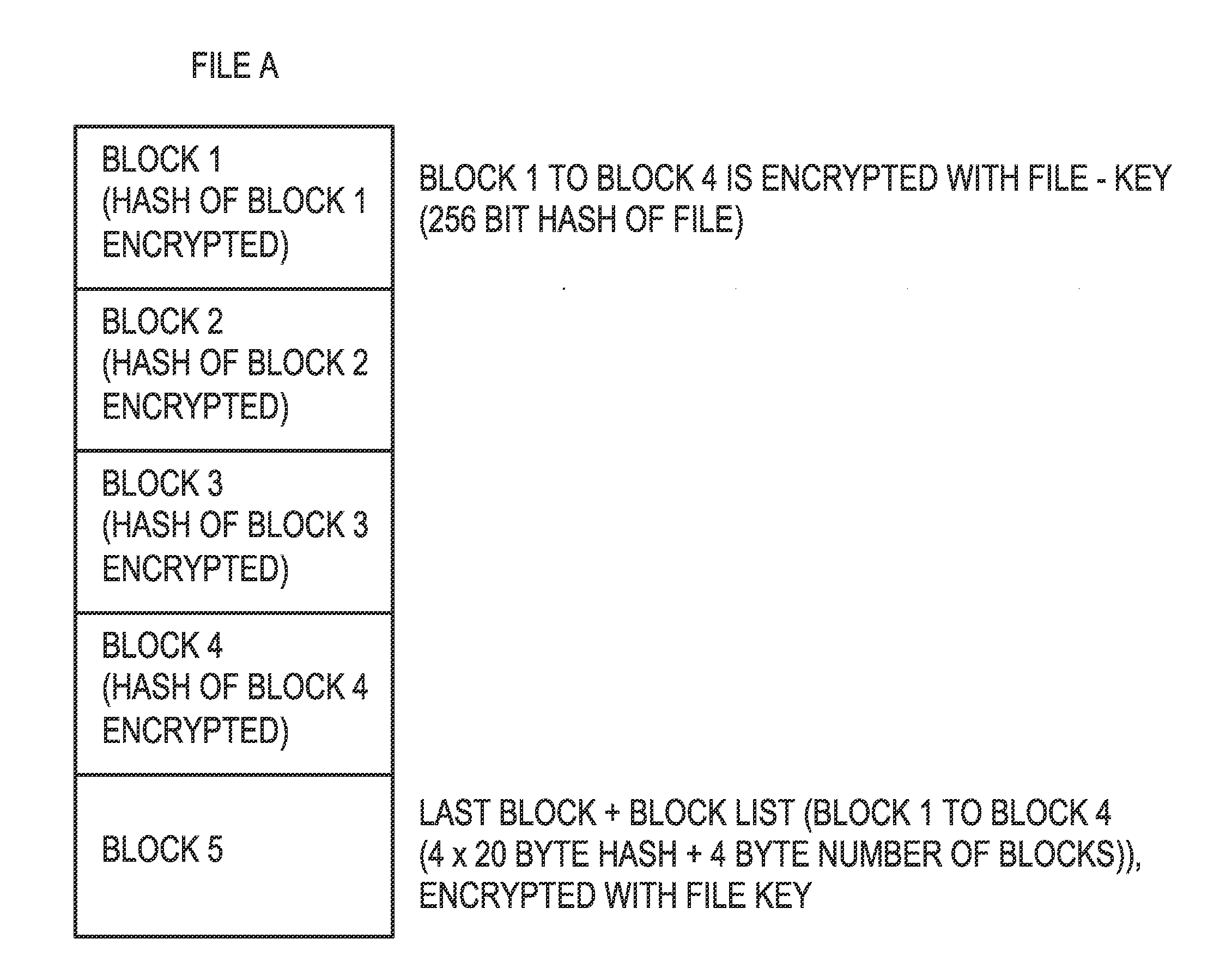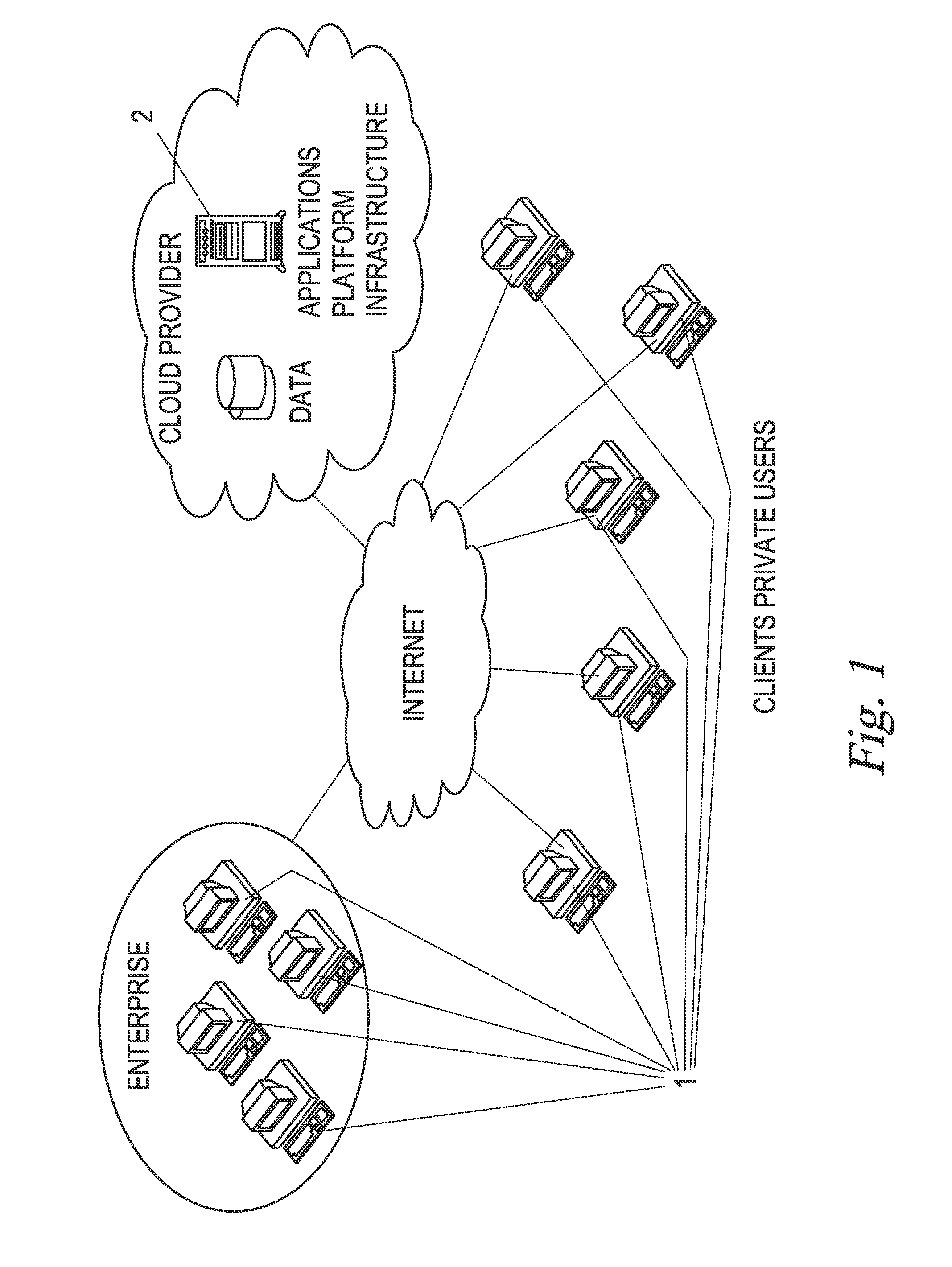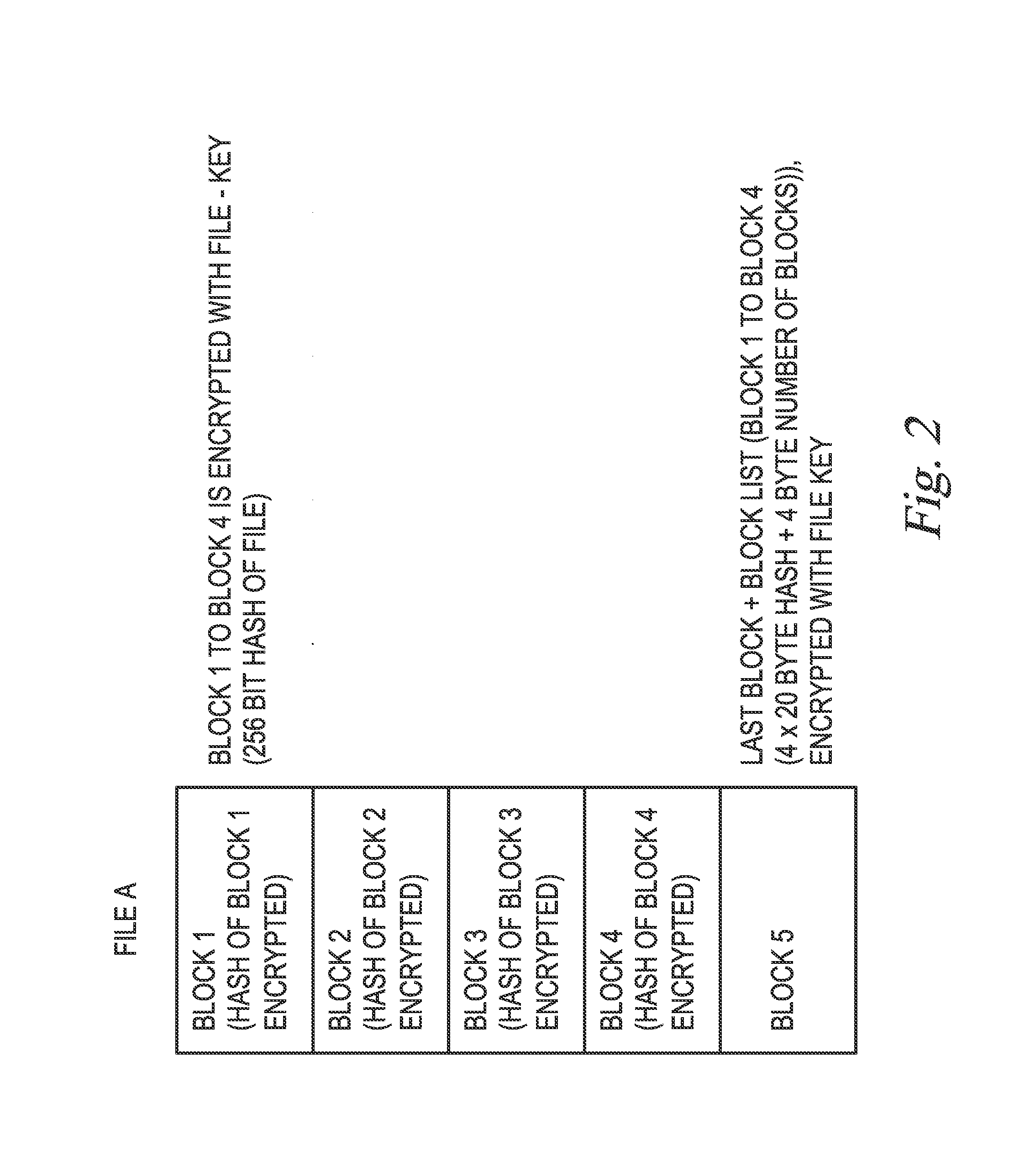Process for Storing Data on a Central Server
a technology of a central server and a processing process, applied in the field of storing data on a central server, can solve the problems of inability to determine whether data blocks created by a user have already been created by another user, security and data protection can only be guaranteed to a limited extent, and the effect of increasing the confidence of end customers
- Summary
- Abstract
- Description
- Claims
- Application Information
AI Technical Summary
Benefits of technology
Problems solved by technology
Method used
Image
Examples
example
[0266]For reasons of simplicity, a data block in the following example consists of 20 characters, while each of the data sub-blocks consists of 4 characters.
[0267]The following data block is given, the blank characters representing the subdivision of the data block into data sub-blocks:
[0268]Data Block Subdivided into Data Sub-Blocks:
[0269]DDDD AAAA CCCC BBBB ABAB
[0270]Further Data Block Subdivided into Data Sub-Blocks:
[0271]CCCC ABAB BBBB DDDD AAAA
[0272]Data Block after Having Sorted its Data Sub-Blocks:
[0273]AAAA ABAB BBBB CCCC DDDD
[0274]One byte which may be looked up in a global list or in a list compiled by the user and based on which this sequence may be computed is sufficient to guarantee 256 different combinations.
[0275]The value 0 would signify: use the sequence the way it is.
[0276]The value 1 would signify: starting with the second data sub-block, followed by the first data sub-block, after which the sequence remains unchanged.
[0277]The value 2 would signify: starting with...
PUM
 Login to View More
Login to View More Abstract
Description
Claims
Application Information
 Login to View More
Login to View More - R&D
- Intellectual Property
- Life Sciences
- Materials
- Tech Scout
- Unparalleled Data Quality
- Higher Quality Content
- 60% Fewer Hallucinations
Browse by: Latest US Patents, China's latest patents, Technical Efficacy Thesaurus, Application Domain, Technology Topic, Popular Technical Reports.
© 2025 PatSnap. All rights reserved.Legal|Privacy policy|Modern Slavery Act Transparency Statement|Sitemap|About US| Contact US: help@patsnap.com



